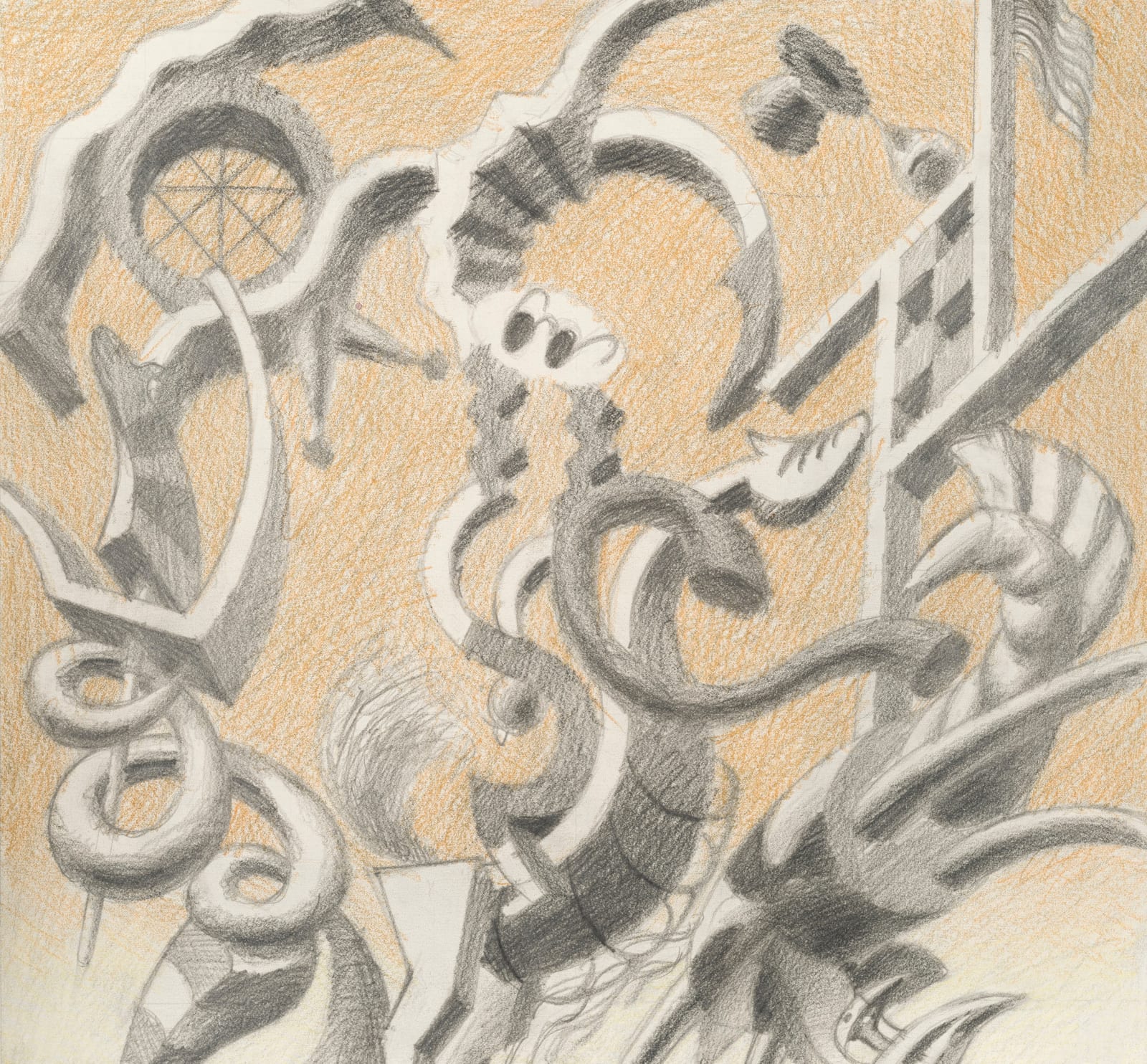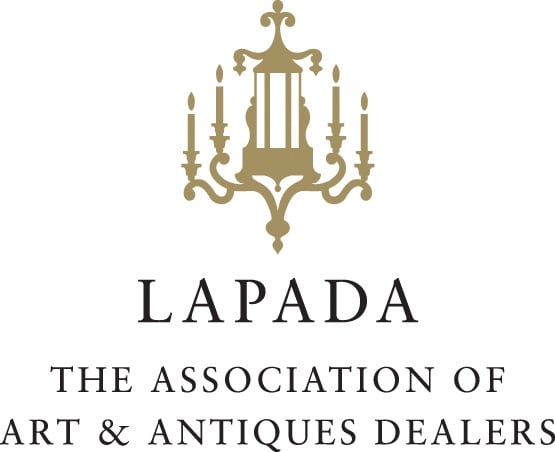Henry Orlik b. 1947
Frame: H. 46cm x W. 40cm x D. 2.5cm
Further images
Orlik’s sepia study Circus provides us with a profound insight into Henry Orlik's raw creative process.
This preparatory drawing strips away the chromatic intensity of the works with bold colour, revealing Orlik's fundamental architectural thinking. The composition's essential elements emerge with stark clarity: the hovering spectacles that establish the work's central surveillance theme, the tumbling performers caught mid-transformation, and most tellingly, the conspicuous absence of any directing ringmaster. What the coloured version animates through vibrant patriotic symbols, this sepia study achieves through pure structural tension, a balance of elements that creates a sense of unease and anticipation. This tension is a key element in Orlik's critique of American democracy.
The monochromatic palette forces us to confront Orlik's compositional genius without the distraction of symbolic colour. Uncle Sam's top hat appears as a ghostly outline; the American flag exists only as suggested geometry, yet the work's critique of American democratic performance remains fully intact. If anything, the sepia treatment intensifies the drawing's documentary quality, as though we are examining archival evidence of democracy's invisible mechanisms. The sepia affects a state of nostalgia in the observer; as if they are witnessing something from a washed-out, former era, half-remembered in the psyche. Childhood visits to the circus are recalled with each explosive element representing a visual, impactful and lasting memory. Early cartoons are suggested in which ‘goodies’ and ‘baddies’ play out their cosmic battles, with heroes rescuing each other from the grasp of scary monsters with sharp talons. Basic childhood hopes and fears play out in the scene and Orlik’s concealed sophistication reveals that those emotions last and haunt adult psyches in seemingly incoherent ways.
The medium itself proves revelatory. Where coloured crayons would later create haptic intimacy, this pencil and sepia wash establishes an archaeological distance, a sense of historical detachment. We observe Orlik's mind at work as he constructs his visual argument through the accumulation of marks and erasures. The performers' bodies emerge from tentative lines into confident gestures, mirroring democracy's process of collective improvisation.
Most significantly, this study reveals that Orlik's central insight, which posits the absence of the ringmaster as a defining paradox of democracy, was present from the work's earliest conception. This absence was not added as a symbolic flourish but conceived as a structural necessity.
Even in its preparatory form, the drawing vividly illustrates how American governance operates through diffused observation rather than centralised authority.
Please refer to the whole essay accompanying the coloured crayon version.
Join our mailing list
Be the first to hear about our upcoming exhibitions, events and news
* denotes required fields
We will process the personal data you have supplied to communicate with you in accordance with our Privacy Policy. You can unsubscribe or change your preferences at any time by clicking the link in our emails.






